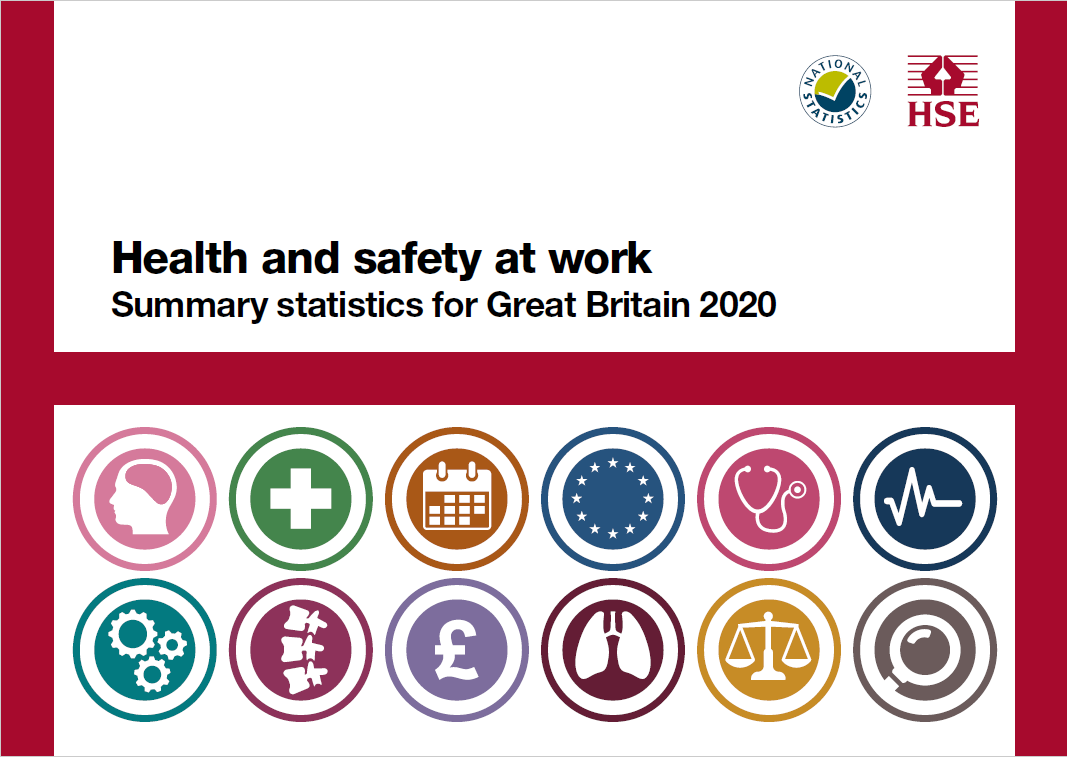The annual analysis of work-related injuries and illnesses by the HSE (Health and Safety Executive) has been released towards the end of a tumultuous year which saw the spread of a global pandemic. However, while COVID-19 may possibly have had an impact on the figures, the HSE has stated that the virus is unlikely to have been the main driver behind its findings.
A summary of the report showed that a total of 38.8 million days of work were lost in 2019/20 due to a combination of work-related injuries and illnesses, up from 28.2 million last year. This cost the economy an estimated £16.2 billion. However, the report also revealed positive news, with just 111 fatalities recorded – a record low.
With fatalities dropping, it now appears that workplaces need to be placing more emphasis on the wellbeing of their workers. Over the year, more than half of Britain’s working days were lost due to mental ill health, a trend that has been increasing in recent years.
Work-related ill health
In the year 2019/20 a total of 1.6 million workers suffered from work-related ill health. The rate of self-reported ill health has been broadly flat in recent years, but the rate for 2019/20 crept up, a trend that carried across into the number of self-reported days lost due to work-related ill health. What is particularly significant is that 51% of cases of new and long-standing work-related ill health were due to stress, depression or anxiety.
In the year 2019/20, 17.9 million work days were lost due to work-related mental ill health, with 347,000 workers reporting a new case of work-related stress, depression or anxiety. These rates of self-reported mental ill health have increased in recent years and this trend looks set to continue, indicating that more needs to be done to help workers. It is estimated that the main causes are workload, a lack of support, violence, threats, bullying or changes at work. In next year’s results, COVID-19 may also prove to be an influential factor.
Work-related injuries
The UK has consistently had one of the lowest standardised rates of fatal injury across the EU and this year posted a record low (111). The rate of non-fatal injuries has remained broadly flat in recent years, and this year 0.7 million workers sustained an injury of this kind. This resulted in an estimated 6.3 million working days being lost.
These figures suggest that more could still be done. Slips, trips and falls on the same level were still the cause behind the majority of injuries, with 29% of workplace injuries being the result of these incidents. Manual handling also continues to cause significant numbers of injuries (19%).
Of the industries, agriculture, forestry and fishing continues to be the most dangerous with a fatal accident rate of 7.73 per 100,000 workers.
Keeping your workers safe and healthy
Creating a robust system of processes that work to identify, control and mitigate risks to your workers can help to make your workplace a safer, healthier and happier place. This can cut absenteeism and boost your bottom line, as well as improve employee retention, keeping key skills within your business.
As the international Standard for occupational health & safety, ISO 45001 can show your customers, stakeholders and staff that you put health & safety first and prioritise your employees’ physical and mental health. By implementing the ISO, you can create a system based on best practice, which can reduce the likelihood of accidents, illnesses and any breaches of legislation.
To find out more, you can get in touch with our experts on 0333 344 3646 or by emailing [email protected].

